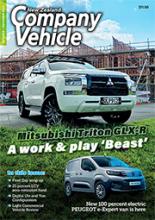In 2018, Toyota’s Prius (literally translated from the Latin ‘first’) was joined by ‘the best’ – the Prius Prime. So, Toyota’s hybrid is now the first and best – according to the company’s own publicity – all in one package.
This brings the Prius ‘fastback’ lineup for 2019 to three models (Prius C is technically a hatch), the SX, ZR and now the Prime, though the Prime is quite significantly different, being a plug-in electric hybrid as opposed to the self-charging SX and ZR versions.
Being a plug-in, the Prius Prime has significantly reduced CO2 emissions and fuel consumption figures. Instead of the Prius’ 80g/km and 3.4 litres per 100km, the Prime returns just 22gms of CO2 and a fuel figure of one litre per 100km.
It has a pure electric range of 63kms, before the 1.8 litre four-cylinder petrol engine with intelligent variable valve timing kicks in to get you to the next charging station – most commonly a house, since the Prius Prime carries a Type 2 charge cable for an approximate full charge time of four and a half hours out of a 230v system.
For the fleet buyer, that’s probably the most critical consideration – and that Prius Prime will cost $150 in yearly running costs, making it something of a no-brainer for those who enjoy crunching numbers, but for those concerned with the meat of a Prime rib, the best Prius is significantly different from the regular cut.
It’s newer of course, so the tech is much more sophisticated, and not only in the engine system – which has a battery warming mechanism to warm the battery cells to an efficient working temperature when the battery is charging – handy if you are chasing/escaping enraged polar bears through the melting icecaps.
The Prius Prime runs on 15-inch alloys as opposed to the 17s of the regular models. Those smaller tyres also have the advantage of a tyre pressure monitoring system, which we understand to be a mandated feature on cars sold new in the US.
The air conditioning – well technically it’s a heat pump for greater efficiency – can be remotely activated before you get in the car. Now that’s handy for Kiwi summers.
For even more high tech-ery, those who have Qi-compatible phones can use the wireless charging pad while us plebs with our crappy cable phones can draw power more aggressively using said cables, which dangle about and generally make nuisances of themselves.
These Murphy-made contrivances are at their worst when you want to swivel around and park the car, so Toyota’s answer to that? Give the Prius Prime a self-parking feature. And there’s the intelligent clearance sonar sensors fore and aft with braking ability too.
Naturally, Prius Prime has the Toyota Safety Sense suite you can find in pretty much everything with a Toyota badge on it. This ‘safety umbrella’ includes Autonomous Emergency braking, Lane departure alert with steering assist and dynamic radar cruise control.
To this, Prius Prime adds Road Sign Assist (recognition), Lane sway warning, and pedestrian detection as well as an adaptive high beam system for the new LED headlights.
Prius Prime is about 105mm longer and 5mm lower than the regular breed, but its 80kg heavier, despite the Prime having the world’s first carbon fibre plastic rear hatch for a production car.
The tailgate does cover a slightly reduced cargo area which is now good for 360 litres as opposed to the 502 in the older models and you only get two-person accommodation in the rear of the Prime as opposed to the snug ‘n cosy three seats in SX/ZR Prius’ss’ses, which means the Prime number for passengers is not five, but four.
So; its bigger, but smaller, costs slightly more, but runs cheaper, carries less, but more comfortably, is techier, safer and handles better, thanks to the new Toyota New Generation Architecture platform.
Being a plug-in, you only get range anxiety when the petrol gauge gets low and that’ll be somewhere between 800 and a 1000kms and of course, there’s the novelty of driving to and from work in perfect silent serenity.
Just don’t expect the wife’s cat to move out of your way when you come home. He won’t hear you.
Specifications:
Body type
Five-door hatch
Drive
Front wheel drive
Engine type
4-cylinder, petrol with electric motor
Engine capacity
1800cc
Max power
90kW @ 5200rpm
Max torque
142Nm @ 3600rpm
l/100km (Combined)
1.0 litres
C02 emissions
22
Boot capacity
360 litres
ANCAP rating
5 star
Price
$48,490



